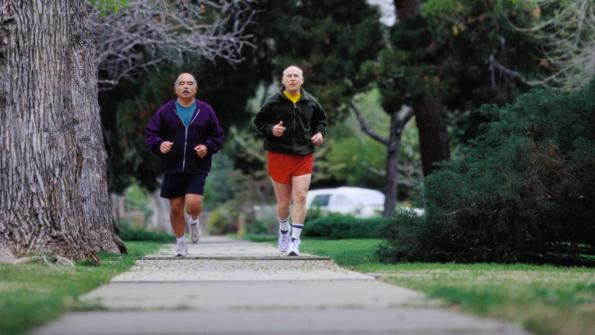Livable communities for the elderly
In increasing numbers, residents of retirement age are requesting "livable communitites." What does this mean for your community? Consider:
By 2030, a third of the country's population will be over 50. Soon people 65 and over will outnumber children 15 and under for the first time in American history. More than 90 percent of the 60-plus population wish to stay where they currently live as they age, according to American Association of Retired Persons (AARP) materials.
For elderly individuals to stay put, livable communities must be developed with the elderly's needs in mind. Livable communities are designed to support and appeal to residents from the youngest children to the oldest adults. According to the AARP Livable Communities Evaluation Guide, factors that play a role in how livable a community is for the elderly include but are not limited to:
- Transportation options
- Walkability
- Safety and security
- Shopping
- Housing
- Health services
- Recreation and cultural activities
- Volunteering options
In 2010, the U.S. Environmental Protection Agency (EPA) awarded Charlotte, N.C., and Brazos Valley Council of Governments in Texas for their attention to details important to the active aging.
According to EPA program materials, Charlotte was recognized for its integration of smart growth and active aging principles to enhance the quality of life for seniors. Mecklenburg County, N.C., was noted for its implementation of the Status of Seniors Initiative, a comprehensive set of recommendations to make the community more age-friendly.
At the time of the award presentation, more than 5,000 affordable housing units were constructed in the city, as well as 16 miles of greenway, 88 miles of bike facilities and 106 miles of sidewalks. Additionally, Charlotte incorporated senior friendly designs in road signage, increased crossing medians and provided longer, audible crossing warnings.
The Brazos Valley regional planning association was recognized for working to promote health and well-being in the lives of its seniors. Bryan, Texas, was highlighted for installing energy efficient lighting along thoroughfares to promote safe activity, as well as constructing bike racks, park benches and flower planters to encourage residents’ outdoor activity. College Station, Texas, was noted for constructing 10 wellness stations in association with gerontology, kinesiology and recreation experts from Penn State University in addition to completing a wheelchair-accessible trail system designed to meet the mobility needs of all residents.
While some factors contributing to livable communities are more obvious than others, such as availability of jobs, shopping, health care and recreation, subtle construction principles also play a role. Home construction with wide doorways, zero-step entrances and easy-to-grasp door handles can all factor into how livable a community is for the elderly, according to the AARP.
For more information on making your community livable, download the AARP’s Livable Communities Evaluation Guide.





















We agree with making livable
We agree with making livable communities, but do not forget the social side of livable communities.
Our company has a few initiatives: 1) Offer a workshop on building community and aging in place by integrating built environment enhancements with social architecture programs 2) Organizing a Denver Metro City Design Competition for HS and grade school kids. Topic is Pocket Neighborhoods with a requirement for senior friendly housing. Winning entries will be presented to various cities to encourage them to change zoning to make this type of housing easier to get approval to build.
How about sponsoring projects
How about sponsoring projects of involving inactive Elders into Community Mentoring Programme? It is about promoting engagement between children and youth to meet as small groups, even one- to – one basis to talk about anythings and share experiences with the youth on regular basis. the programme can be strategised professionally by the city and communities to provide mental stimulant on both part which is to complement physical activities necessary for the well being. it is to provide useful and productive life for all. and leave the retirement to where it is belong, and it is after our demise into the unknown.
Thank you for the opportunity.